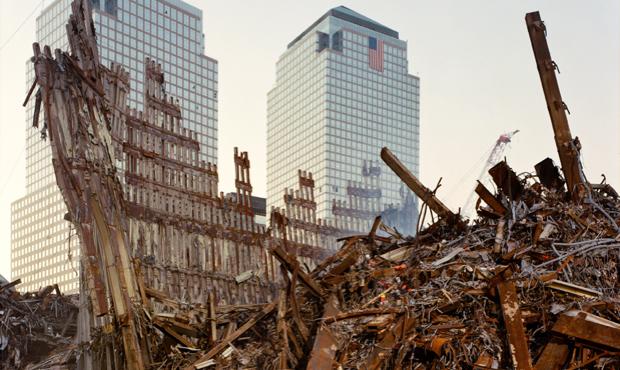
Joel Meyerowitz is an American street, landscape and portrait photographer. He is considered one of the greats of street photography, and a pioneer of colour in photography as a serious form of art. After discovering photography at the age of 24 in 1962, he is still actively photographing 53 years later, at the age of 77.
Meyerowitz was born on March 6th 1938 in New York City. He began photographing seriously in 1962 after becoming inspired by witnessing photographer Robert Frank at work, and after some consideration he quit his job as an art director at an advertising agency to become a full time photographer, taking to the streets as a black-and-white street photographer.

Over the next 10 years although enjoying some success, Meyerowitz had little critical-acclaim for his work. He experimented in both black-and-white and colour, but by 1972, he decided to photograph exclusively in colour, a medium that was not highly respected nor acknowledged in the art world at the time. Meyerowitz’s first book Cape White however shot him to worldwide acclaim as a photographer, was one of the first photography books of colour photographs to be given serious worldwide recognition.

Unlike Henri Cartier-Bresson and Robert Frank who are also viewed as greats of street photography, Meyerowitz is very different in his approach. His style more so reflects the work of another renowned photographer, William Klein; producing lively photographs full of suspense, drama and action in a direct close-up manner, separate from the distant, observed style of Frank and Cartier-Bresson. Meyerowitz likes to photograph his subject whilst they are engaged in a particular movement or action, with his images telling a story. Meyerowitz believes that it is important for his photographs to tell a story about the humanity on the street. His photographs focus heavily on human interaction, usually two or more people engaging in a physical game, communication or moment. He photographs in colour, which is rare for a street photographer to do as street photography is traditionally viewed as a more appropriate in black-and-white. His style has drawn both praise as well as criticism, viewed by some critics as a cheap mockery of the work of some iconic street photographer. Meyerowitz use of colour relates greatly to his willingness to change and push the boundaries of photography, and criticism does not affect him greatly.
Since the initial success of Cape Light, Meyerowitz has since produced over 20 books, including ‘A Summers Day’ (1985) and ‘Bystander: A History of Street Photography’ (1994). As well as photographing, Meyerowitz also gives lectures on a regular basis around the world. His working methods were subject of a 1981 documentary presented by Robert Gilgberg.
September 11th: In the aftermath of the 9/11 Terrorist Attacks, Meyerowitz was granted unlimited access to photograph the ruins of ground zero, recording the immediate effects of the event and also the 9 month project to repair it. His work was made into a series entitled Aftermath: World Trade Centre Archive.

I find Joel’s work to be very interesting because of the way that he greatly immerses himself in his subject matter. His dedication to street photography is impressive and inspiring
Here is the 1981 documentary of Joel Meyerowitz. Gilgberg follows him working on the streets of New York, as well as talking to him more formally in his studio. Although an old documentary, I nevertheless found this to be very insightful and interesting.
This is Joel’s official blog. He has a list of all his past and current work. I would recommend it as a good read.
